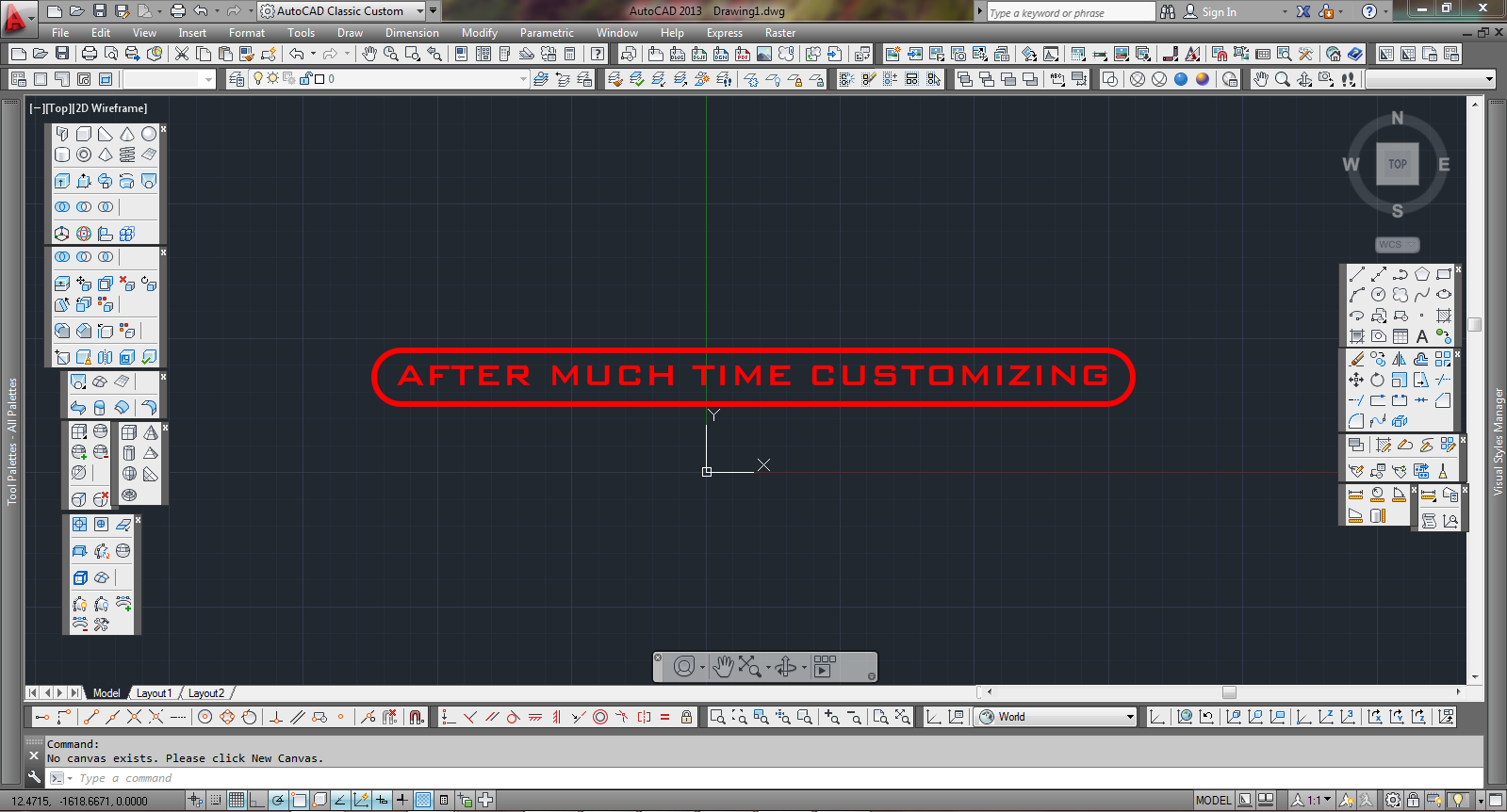
As before, you can right-click on things to change the various settings. Now you can place and size your Dashboard-like thing as you see fit. In the tab title row (the bar with the word Home in it), right-click and pick Undock. If the Ribbon is not visible (it won’t be if you just selected the AutoCAD Classic workspace), enter Riboon to bring it back. The AutoCAD 2007/8 Dashboard is gone, but you can have a vertical Ribbon instead. If you ever want to turn it back on, enter Ribbon. You can close the Ribbon with the RibbonClose command. AutoCAD Civil 3D), but it may not be the case in other verticals (e.g. This is the case in vanilla AutoCAD and some verticals (e.g. Note that this will only work if you have the acad.cuix file loaded (or partially loaded). The following command sequence will do it: What to do? Turn on one toolbar at the Command prompt, then you will be able to access the menu by right-clicking on the blank area to the right of it. That menu is still available if you right-click in an unused docked toolbar area, but if you have no toolbars visible there will be no such area available.

Autodesk (vindictively?) removed that option in 2010. In AutoCAD 2009, you could turn individual toolbars on and off by accessing a menu obtained by right-clicking on the QAT. Enter MENUBAR 1 to turn pull-down menus on. If so, or if you want finer control over your interface, read on. If you’re using a vertical variant of AutoCAD 2010, this workspace may not be available. Click on it and pick the item called AutoCAD Classic. In the bottom right corner, there is a little button that looks like a gearwheel. In vanilla AutoCAD, you can restore much of the user interface by just switching workspaces. Let’s assume you’ve made the decision to put your environment back to AutoCAD 2008 or earlier how do you do it? We should be grateful that in AutoCAD 2010 at least (unlike Revit 2010), you do still have that choice. The 2010 Ribbon is still a Ribbon, but in my view it’s a better one than in 2009. As I stated in my original post, I think you should give any new features a fighting chance before turning them off or ignoring them. One thing that’s regularly asked whenever a new AutoCAD release hits the streets is how to make it work like earlier releases. Note: there are updated versions of this post for AutoCAD 20.

Much of this post is the same as the original, but there are differences. Lots of people seemed to find it useful, so I guess it’s worth doing an updated sequel for the current release. Edit: If you’re running a more recent release of AutoCAD, have a look at the post AutoCAD 2017 – Putting things back to “normal” instead.Įasily the most popular post on this blog, in terms of both hits and comments, is AutoCAD 2009 – Putting things back to “normal”.


 0 kommentar(er)
0 kommentar(er)
